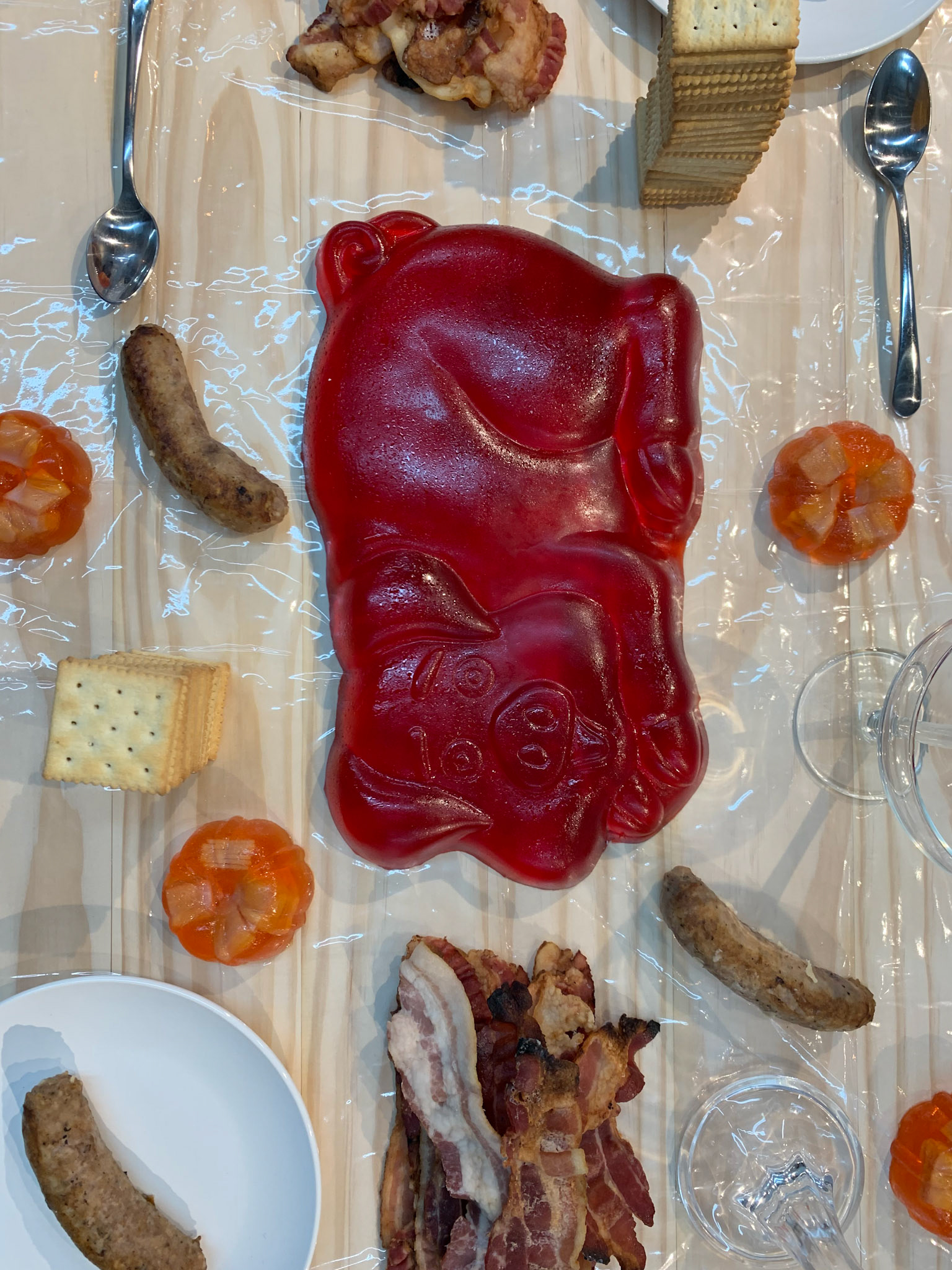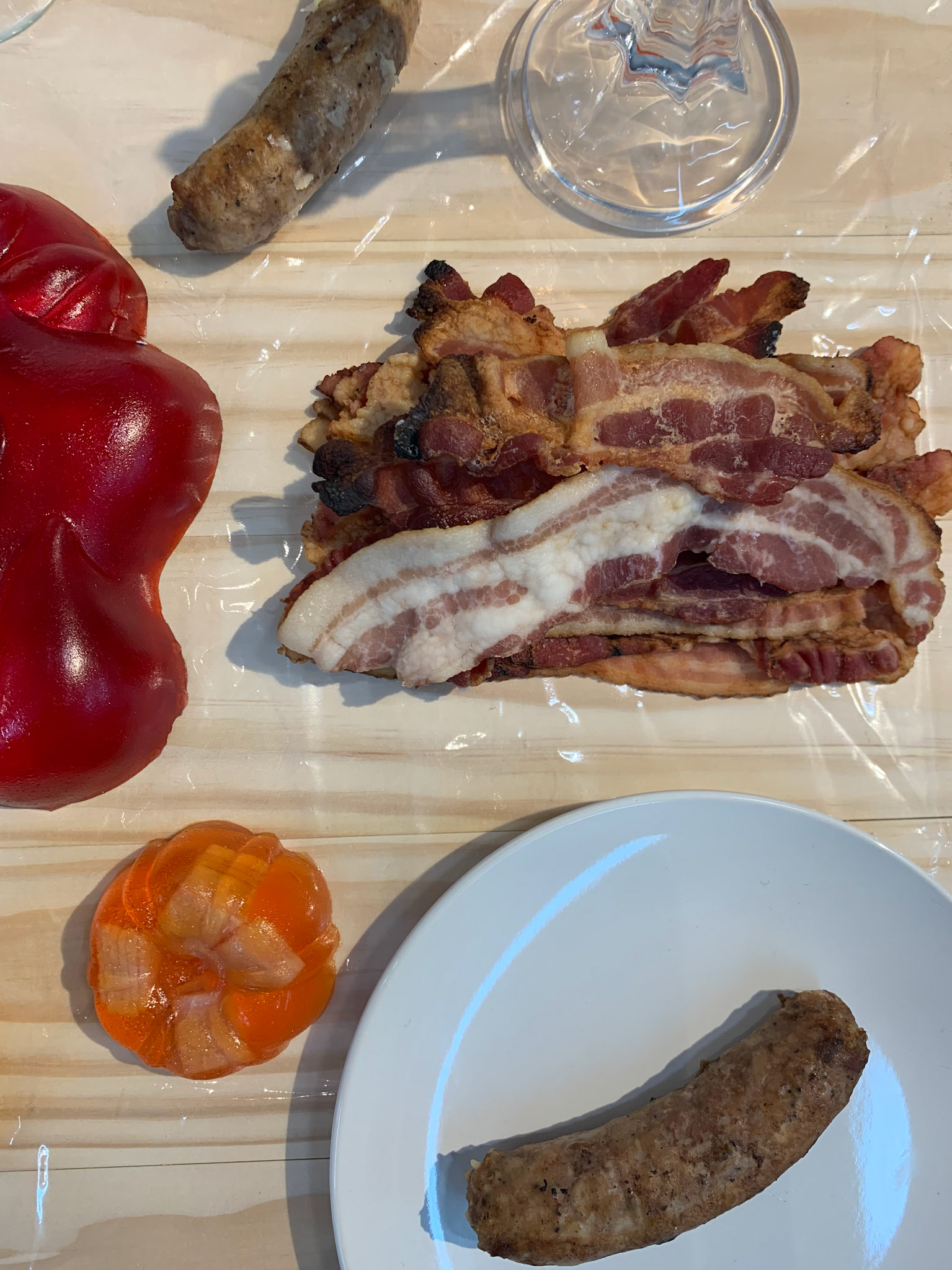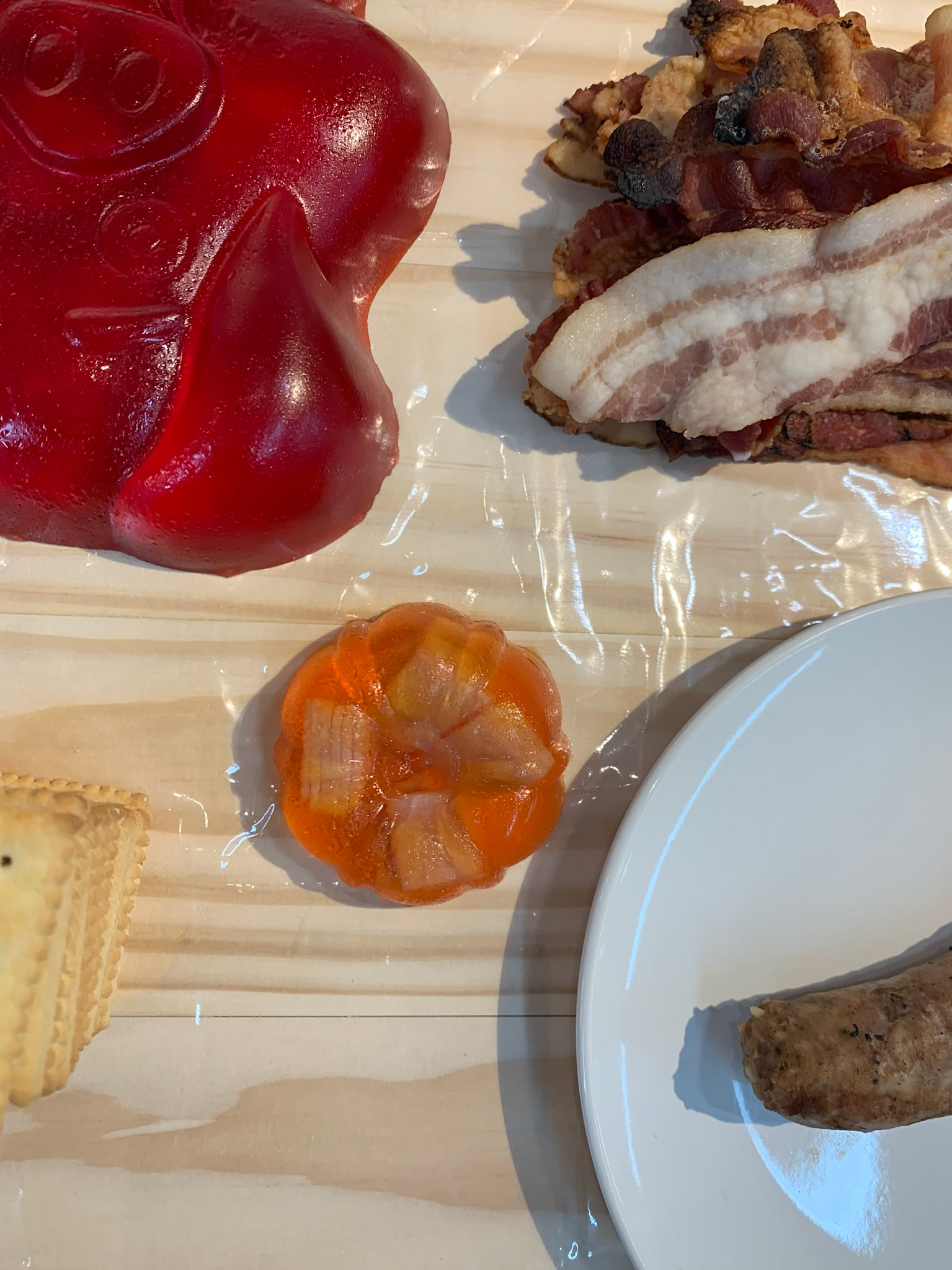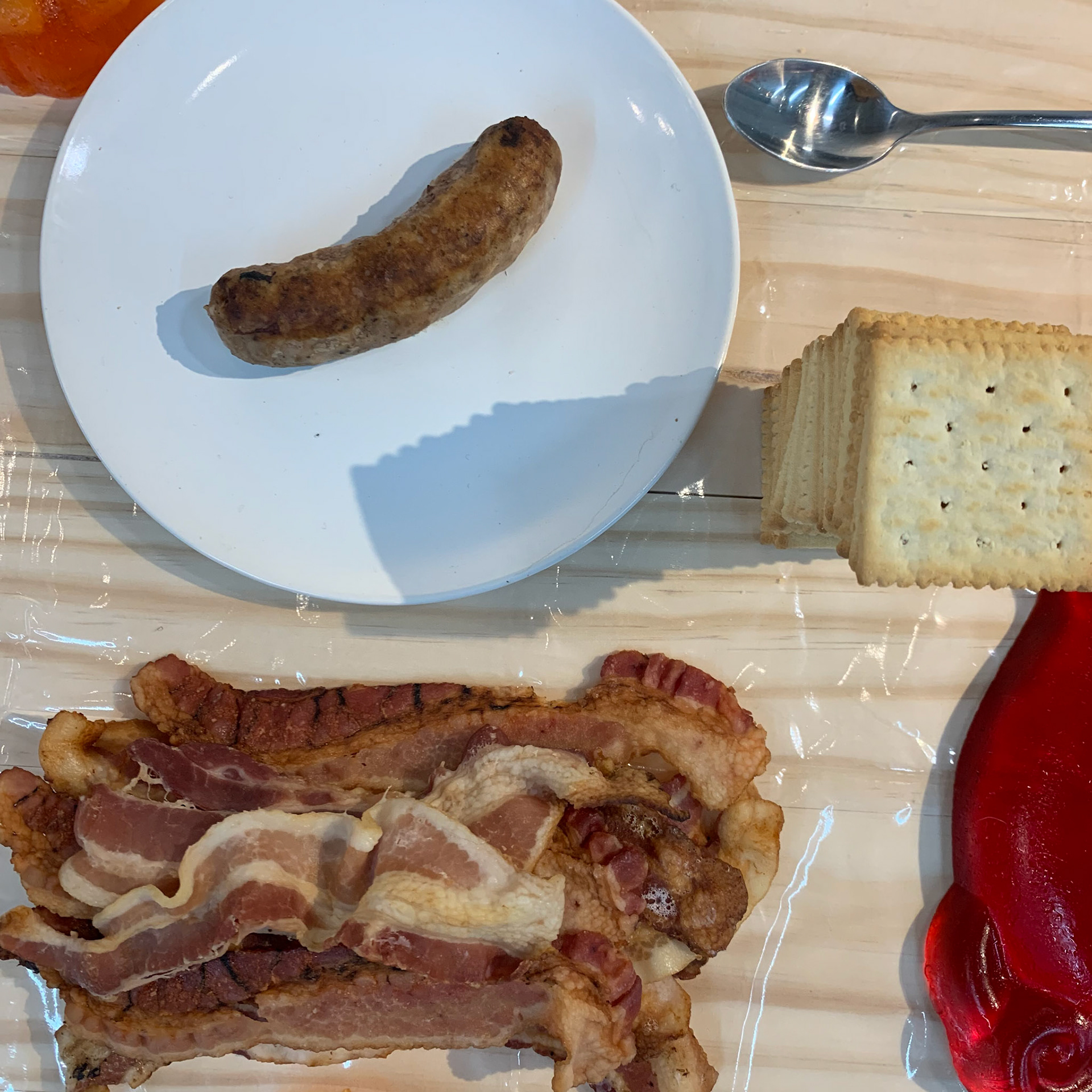In examining “the disgust factor,” the variability of human willingness to consume meat from animals emerges. Research related to this idea has suggested we avoid eating animals similar to ourselves, but within this we can take pause and examine further- what pushes the boundaries of the animals people are willing to eat? Pet versus meal? The animals that are slaughtered but never make it to dining tables? In relating ourselves to these questions, omnivores and herbivores alike, we can begin to identify our dark desires in consumption.
A combination of inspiration from fifties and sixties era cookbooks, the presumed health of “clean meat,” and a Morton Williams dumpster- Pork Party begs the question “would you eat this? And, my god, if so, why?” Presenting salvaged and expired pork products in raw and cooked forms, Pork Party invites viewers to confront ideas of “disgust” and consider the setting in front of them, sanitized as it might be. In its incorporation of blood and gelatin, the work showcases the insidious nature of the ignored ingredients on food labels- and the American shrug in consuming them.
expired bacon, rancid ham, runoff boiled pork blood, rock hard gelatin, moldy sausage, wheat, water plastic, glass, metal, raw pine. all animal products courtesy of morton williams trash bins.








Foer, Jonathan Safran. Eating Animals. Penguin Books, 2018.
Ruby, Matthew B., and Steven J. Heine. “Too Close to Home. Factors Predicting Meat Avoidance.” Appetite, vol. 59, no. 1, 2012, pp. 47–52., doi:10.1016/j.appet.2012.03.020.